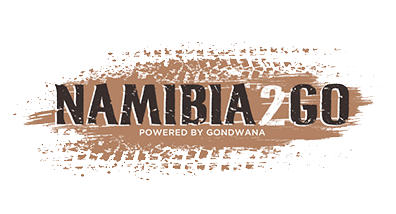Set in southern Namibia, Great Namaqualand, ‘Bittersweet Karas Home’ is the story of three families, the Hills, Walsers & Hartungs, whose lives merge and intertwine in a semi-arid land that presents both hardship and blessings. Over the next few months, we would like to share this bittersweet saga with you from the (as yet) unpublished book.
𝐅𝐚𝐦𝐢𝐥𝐲 𝐥𝐢𝐟𝐞 𝐨𝐧 𝐄𝐧𝐨𝐬
The first buildings to be erected were ‘hartbeeshuisies’. They would later be replaced by more substantial brick houses. Emil Friedrich and Wilhelmina Charlotte were both stubborn and strong-willed people, each with their own way of doing things. Wilhelmina was responsible for running the farm, whereas her husband was responsible for paperwork, purchases and general administration. This division of labour caused some clashes, especially when Emil insisted that he was in control of the farm. Emil wrote in his will that his wife had ‘made his life a hell’ by constantly disagreeing with him. Even in death they did not share grave sites, the locations having been selected a long time before. Emil was buried close to a knoll overlooking the farm, while Wilhelmina’s grave lay in the shadow of a tree where she had relaxed every evening enjoying the view of the mountain range.
Their son, Oskar Werner Hartung, had been born in Kanus near Grünau in 1889, in the windy month of August. Wilhelmina Charlotte had planned to have her child in Groendoorn where there would have been helpers with some midwifery skills. Instead, she went into labour at the side of the road without any midwife and with a husband who didn’t know anything about childbirth. Fortunately, there were no complications. Emil cut the umbilical cord and found a blanket to wrap around the baby. Wilhelmina recovered from the exertion and held the baby while Emil recovered from the shock and the realisation that both wife and child could have died during delivery. They felt safe when they reached Groendoorn half a day later. Oskar’s sister, Anna Augusta Marie Rosa, was born in 1891, well-timed and without drama.
As soon as the children were old enough for school, their father ordered textbooks and Wilhelmina began home schooling. The children attended the Roman Catholic Sisters’ school in Heiragabis for three months until they returned home infested with lice, a situation the parents found intolerable. They were then sent to the Rhenish Missionary Society’s boarding school in Stellenbosch for four years. The absence from home was difficult for the children who returned home for a vacation only once during their school career. English was their mother tongue and Cape Dutch-Afrikaans and Nama were the languages they used on the farm. They learned German from their father, the Sisters in Heiragabis and their teachers in Stellenbosch.
Anna and Oskar were attractive children. As a young woman, Anna made an impression on the men who wouldn’t fail to notice her when she visited Keetmanshoop. A German civil servant fell in love with her and asked for her hand in marriage in a letter addressed to Emil. Anna, however, did not reciprocate his feelings.
In 1935 Anna would meet and marry Otto Fries from Zürich, Switzerland, who was her senior by 13 years. He kept a store on the neighbouring farm, Dickbusch, with his partner, Koberzig, and assisted as a farm manager.
The Hartung family subscribed to the magazines ‘The Family Herald: A Domestic Magazine of Useful Information & Amusement’ and ‘Weldon’s Ladies’ Journal’ that catered for women who didn’t have access to fashion boutiques. The journals provided patterns for outfits that women with dressmaking skills could produce themselves with the right fabric. Wilhelmina Charlotte, living on a remote farm in the Kalahari in the shadow of the Great Karas Mountains, could dress herself and her children with a bit of style while still fulfilling her obligations as a farmer and as a handywoman who crafted her own furniture.
Although Emil had clashed with the German administration, he was German in his attitude. He was not as pro-British as the Hills, Walsers and Örtendahls but had lived under British Cape rule quite comfortably. Emil Friedrich was a loner and didn’t enjoy the clubs and busy social life favoured by some Germans who celebrated events like the Kaiser’s birthday with patriotic fervour. He preferred being at home in the countryside, reading and talking to close acquaintances. Being married to a Hill made him suspect in German settlers’ eyes because the Hills were British and of mixed descent. He, nevertheless, was not openly ostracised by Germans beyond his self-imposed separation from the German hub in the towns. He found it difficult to define his identity clearly and his choice of a wife was not a statement but a personal choice.
An enigmatic character, Emil led a tough existence of travelling and beginning anew until he was able to secure a home at Enos in the latter years of his life. Throughout the trials and tribulations, however, he maintained a sense of responsibility and knew how to establish professional networks as a trader and farmer.
𝐀 𝐰𝐚𝐫 𝐢𝐧𝐭𝐞𝐫𝐥𝐮𝐝𝐞
In October 1903, the Hartungs received news about the Bondelswarts uprising in Warmbad. While they were busy loading their wagon for flight, a group of armed Nama arrived. Wilhelmina showed presence of mind and courage and acted with tact and intelligence. She addressed the Nama respectfully in their mother tongue and introduced herself as a Groendoorn Hill. The Hills were well-known to them. She then fetched the biggest ‘kapater’ (castrated goat), slaughtered it and roasted it on an open fire. After a feast of meat followed by coffee and tobacco, the Namas departed amicably.
The Hartungs had survived a dangerous situation. A year later, when the Witboois rose against the colonial government, the male members of farming families were in danger of being shot. The Great Karas Mountains, only a few miles south of Enos, became the main base of Nama resistance and saw intense fighting.
The years of exile in Gordonia across the border meant returning to a form of existence that was familiar to the Hartungs from the days when they had farmed Arris. They moved from place to place, wherever they could acquire access to grazing, until hostilities ceased in 1908, allowing them to return to their home in the Kalahari.
(Join us every Sunday to take a step back in time and follow the interesting, sometimes sweet, sometimes heart-wrenching tale.)


.jpg)
.jpg)





.png)

SUBMIT YOUR COMMENT